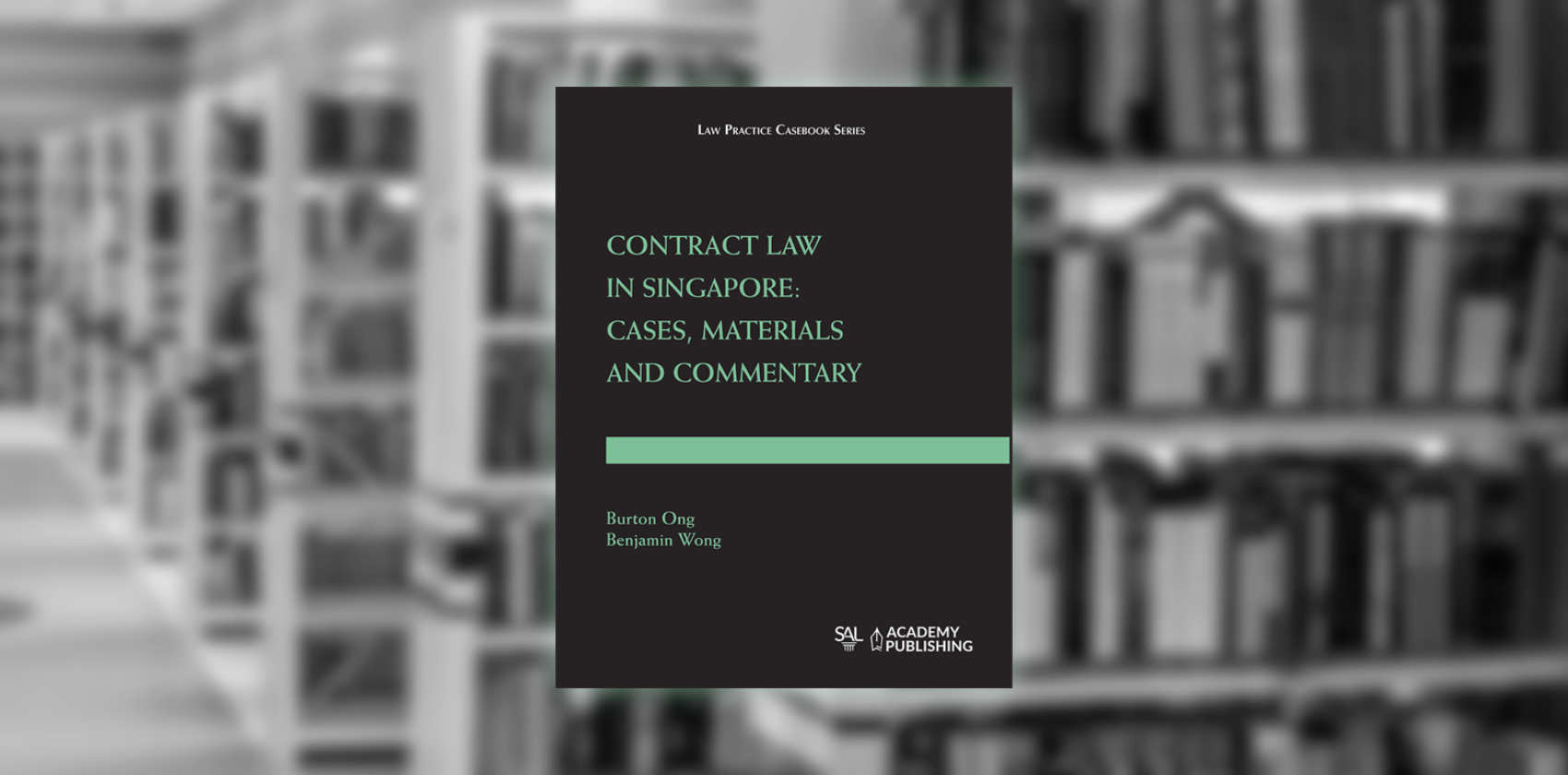
Contract Law in Singapore: Cases, Materials and Commentary
BURTON ONG & BENJAMIN WONG. Academy Publishing, 2019.
(Not so) many years ago, when I had just embarked on the study of law, my first-year contract law professor impressed upon me (and many others) the importance of reading cases. Textbooks provide you with a summary of the general principles, he said, and headnotes provide a brief summary of the outcome of the case, but there is no substitute for the process of delving into the cases and reading the judge’s analysis of the legal issues at hand.
Not too many years later, the same professor has co-authored Contract Law in Singapore: Cases, Materials and Commentary (Casebook) that sets out extracts from important Singapore law contract cases in each area of contract law.
The foreword to the Casebook, penned by the Honourable Judge of Appeal Andrew Phang perfectly encapsulated all that is good about this book, namely, its approach to “pedagogy, history, practicality and content”. My review will surely pale in comparison. Nevertheless, I shall try to explain why this book should form part of the library collection of every law student and practitioner.
This Casebook covers all the major topics of contract law. In each chapter, there is an overview of the topic, followed by extracts from cases for each relevant sub-topic. For example, Chapter 10 covers the topic of mistake in contract law. It starts off with an overview of the doctrine of mistake in contract law (or rather, doctrines of mistake in contract law), and goes on to set out relevant case extracts for each of the separate doctrines of mistake, namely, unilateral mistake, common mistake, and mutual mistake. Care was taken to select the relevant parts of each case extract. The facts of each case are succinctly summarised so that the reader can understand the important facts immediately and devote more time to reading the case extract and understanding the principles espoused within. This is particularly helpful as each landmark case may discuss more than one legal concept. Readers can focus on the specific point made by the court in that decision and consider how it coheres with the reasoning adopted by other cases in the same section.
The benefits of a casebook, especially one that is an excellent piece of scholarship (ie, the Casebook), are fairly obvious to law students. Why then should practitioners acquire it? I would say that this book is equally useful in practice as practitioners can use the compilation of cases for each topic as a springboard to refresh their understanding of various topics of contract law, conduct further research on a point of contract law or to prepare submissions. One example comes to mind here – the topic of illegality and how it affects contractual obligations. This topic is complicated and is aptly described in the Casebook as “generally confused (and confusing)”.1Casebook at (03.001). The Court of Appeal has released two judgments on this area in recent years2Ting Siew May v Boon Lay Choo (2014) 3 SLR 609; Ochroid Trading Ltd v Chua Siok Lui (2018) 1 SLR 363 and the Casebook sets out extensive extracts from both judgments. Given the complexity of the analysis, the authors have helpfully provided summaries of the points to be made in the subsequent extracts, to enable the reader to identify the relevant extract in the judgment to focus on.
There are also two aspects to the Casebook that I would like to highlight. The first is that the Casebook has examined areas where the Singapore courts have critically examined whether a particular legal doctrine is still relevant today but nevertheless decided not to overturn precedent for now. An example of this would be the critique of the concept of consideration in Chapter 2.3S Pacific Resources Ltd v Tomolugen Holdings (2016) 3 SLR 1049; Gay Choon Ing v Loh Sze Ti Terence Peter (2009) 2 SLR(R) 332 This is interesting to the reader as these cases cast a spotlight on issues that may be revisited by the Singapore courts in the future.
Secondly, I would specifically highlight Chapter 6 on remedies which is especially useful for practitioners. This chapter provides a snapshot of the various remedies that a party is able to obtain for a breach of contract as well as the limits of each remedy. The study of remedies available for breach of contract is one area in which law schools could perhaps improve upon. It is heartening to see that the authors have included a chapter on remedies that would assist practitioners (and students) in understanding this topic better.
I have but one minor quibble with the Casebook. Each chapter concludes with a section containing questions on the preceding case extracts and a post-script discussion section which examines the points raised in the overview at the start of each chapter. It may be better if the questions and discussion are broken up even further according to each section, so that the reader may be able to better grasp the concepts raised by the case extracts in each section.
Minor quibble aside, the Casebook is a valuable addition to the library of every law student and practitioner. I hope you will find the Casebook as useful as I have.
To purchase the book, please visit https://www.sal-e.org.sg/contract-law-in-singapore-cases-materials-commentary






